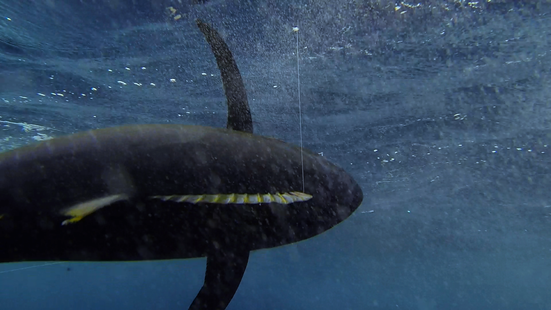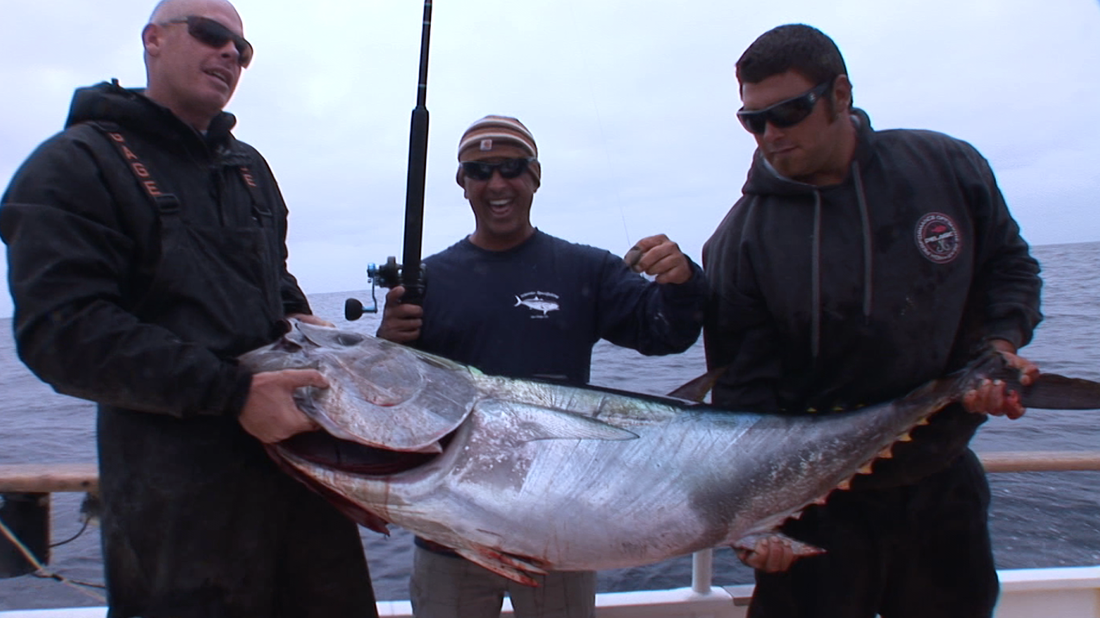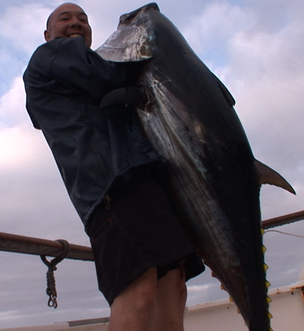Bluefin Tuna
|
Description: The body of the bluefin tuna is cigar-shaped and robust. The head is conical and the mouth rather large. The color is dark blue above and gray below. Bluefin tuna can easily be distinguished from other members of the tuna family by the relatively short length of their pectoral fins. Their livers have a unique and definitive characteristic in that they are covered with blood vessels (striated). In other tunas with short pectoral fins, such vessels are either not present or present in small numbers along the edges.
Range: Worldwide in all but the coldest seas. Bluefin tuna range throughout the eastern North Pacific Ocean with fish being taken from Magdalena Bay, Baja California, to Shelikof Strait, Alaska. Most bluefin tuna landed by California anglers are 1 or 2 year olds and weigh between 15 and 30 pounds.
|

Natural History: Examination of a number of stomachs indicates that while in California waters anchovies make up the bulk of the diet. Sanddabs, surfperches, and white croakers are also consumed.
Fishing Information: Bluefin tuna are seasonal visitors to California waters. They usually appear in May and depart by October. Since they are temperate tunas, their availability to anglers depends on water temperatures in the 62° to 68° F degree range. They can be located by either trolling feathers or anchoring at a spot known to be frequented by bluefin tuna, and chumming with live anchovies.
Other Common Names: leaping tuna, tuna, footballs, tunny, shortfin tuna, ahi, great albacore.
Fishing Information: Bluefin tuna are seasonal visitors to California waters. They usually appear in May and depart by October. Since they are temperate tunas, their availability to anglers depends on water temperatures in the 62° to 68° F degree range. They can be located by either trolling feathers or anchoring at a spot known to be frequented by bluefin tuna, and chumming with live anchovies.
Other Common Names: leaping tuna, tuna, footballs, tunny, shortfin tuna, ahi, great albacore.


